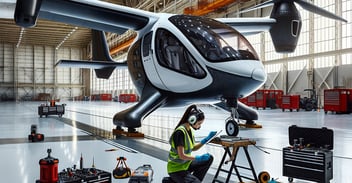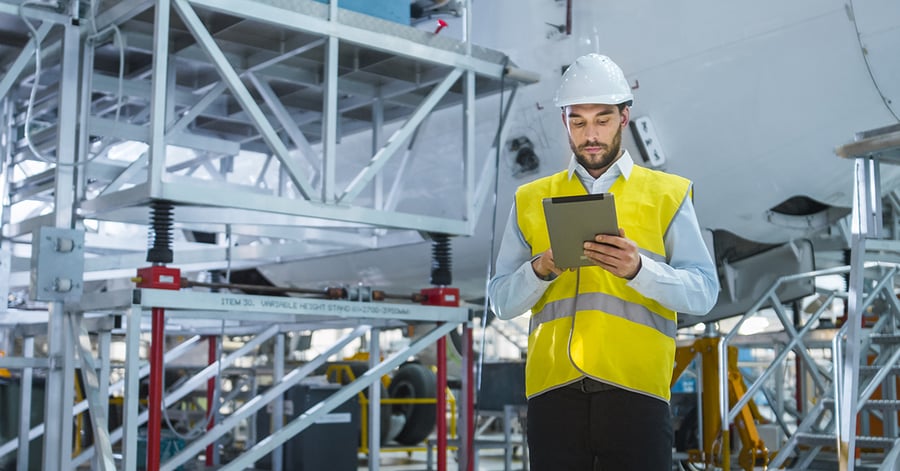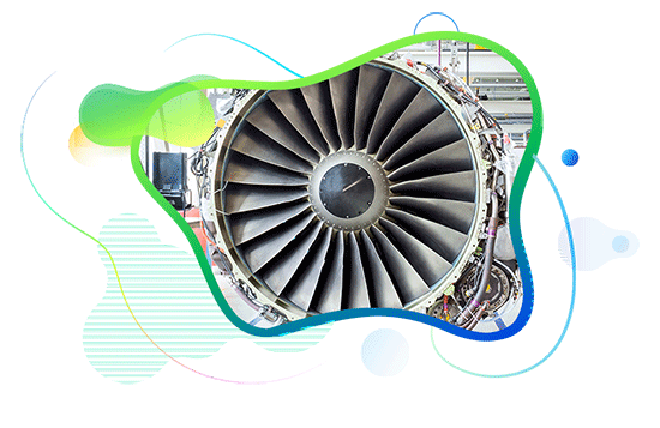
Your Guide to AME Authorization: Training & Certification for Aviation Engineers
Published :

Aviation maintenance is a highly regulated industry, requiring strict adherence to safety and operational standards. Engineers working in Aviation Maintenance Organizations (AMOs) must undergo rigorous training, certification, and AME authorization processes to ensure compliance with aviation regulations.
Operational and Safety Risks of AME Authorization Non-Compliance
Failure to maintain proper AME authorization can lead to serious operational and regulatory consequences, including:
To mitigate these risks, aviation maintenance organizations must ensure their engineers remain certified, well-trained, and continuously authorized to perform maintenance tasks. A strong understanding of the AME authorization process is essential to maintaining compliance and operational readiness.

Aviation maintenance organizations operate under the supervision of regulatory authorities, which enforce strict guidelines for engineer training and certification. Some of the major global aviation authorities include:
Each of these authorities has its own set of regulations governing engineer authorization and certification, ensuring that only qualified personnel handle critical aircraft maintenance tasks.
2. Engineer Certification Requirements
To work in an AMO, maintenance engineers must hold relevant certifications issued by regulatory bodies. The most common certifications include:
These certifications validate an engineer's knowledge, skills, and competency in aircraft maintenance and repair.
3. Training Requirements
Engineer training in aviation maintenance follows a structured curriculum that includes theoretical knowledge and hands-on practical experience. Training requirements typically cover:
4. Engineer Authorization Process in AMOs
Once an engineer meets certification and training requirements, they must receive formal authorization from their AMO to perform maintenance tasks. The authorization process typically involves:
Ensuring the competence and AME Authorization of aviation maintenance engineers is vital for aircraft safety and regulatory compliance. Training, certification, and authorization processes serve as critical pillars in maintaining high standards within the aviation industry. AMOs must diligently follow these regulations to uphold safety, efficiency, and operational integrity in aircraft maintenance. By adhering to these guidelines, aviation engineers contribute to safer skies and enhanced reliability in air transport worldwide.
Enterprise asset management (EAM) involves the management of mission critical assets of an organization throughout each asset's lifecycle. EAM is used to plan, optimize, execute, and track the needed maintenance activities with the associated priorities, skills, materials, tools, and information. The aim is to optimize the quality and utilization of assets throughout their lifecycle, increase productive uptime and reduce operational costs.
Enterprise asset management (EAM) involves the management of the maintenance of physical assets of an organization throughout each asset's lifecycle. EAM is used to plan, optimize, execute, and track the needed maintenance activities with the associated priorities, skills, materials, tools, and information.
The software helps in effective maintenance of assets through preventive, predictive, shutdown and breakdown maintenance strategies. The system also helps enterprises mitigate equipment risks by enhanced safety standards. The streamlined operations and improved asset performance helps organizations increase their investment effectiveness.
EAM is important because it helps organizations track, assess, manage and optimize asset quality and reliability. Asset intensive Organizations have hundreds, thousands, even millions of assets which needs to be maintained to maximize / optimize life of these assets to increase the return on investment.
The key features of effective EAM are:
Asset Intensive companies under the following Industries :
Contact us for a meeting and schedule a demo
This differs on case to case basis, based on the type of installation and unique industry specific requirements. Contact us for a meeting and schedule a demo.
This differs on case to case basis, based on the type of installation and unique industry specific requirements. Contact us for a meeting and schedule a demo.
Stay Connected, follow us on LinkedIn / Twitter to know more about EAM Software latest trends.

All Rights Reserved. © Copyright 2024. Ramco Systems.